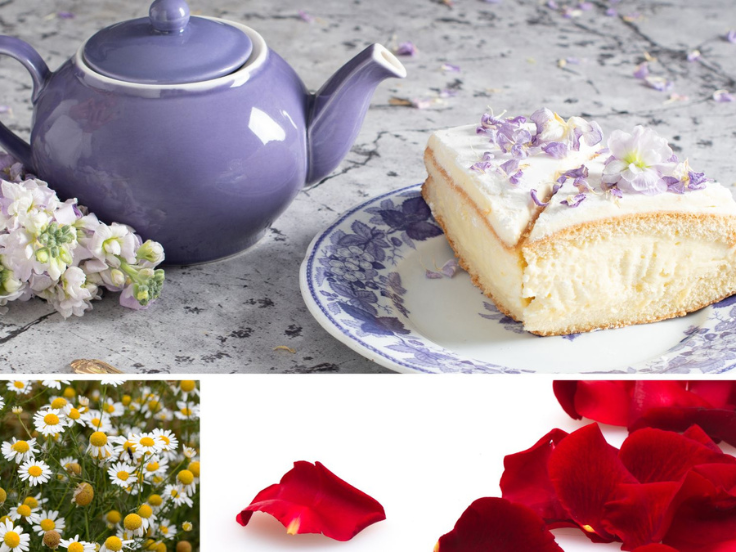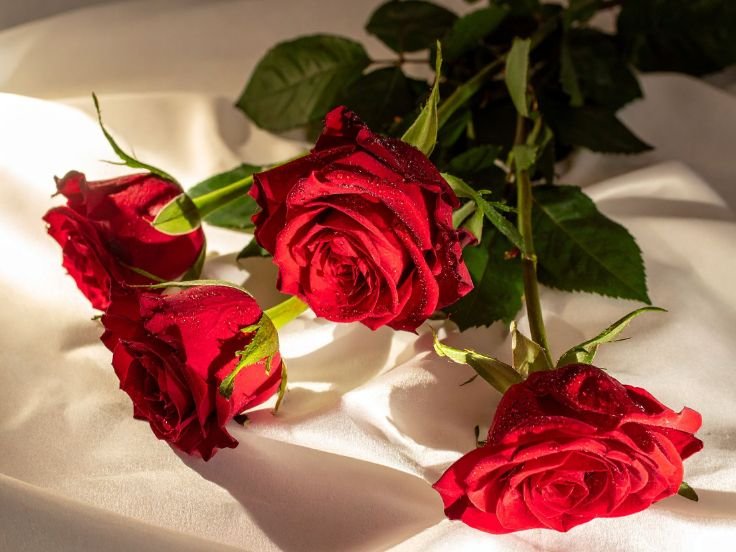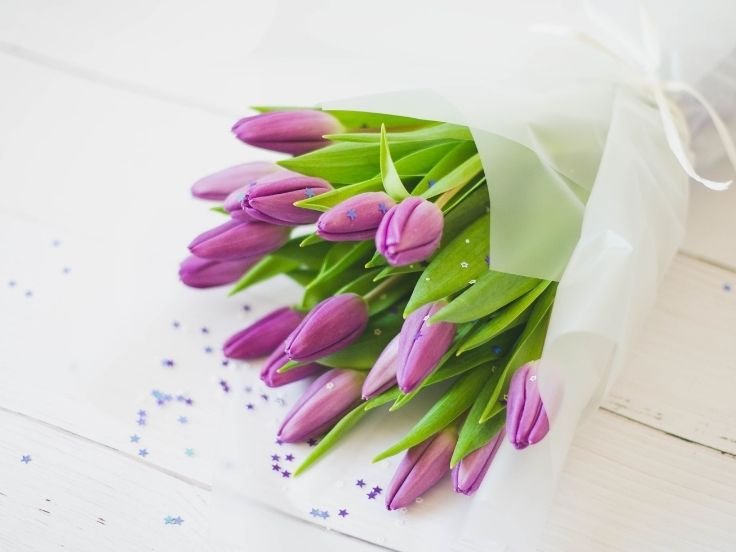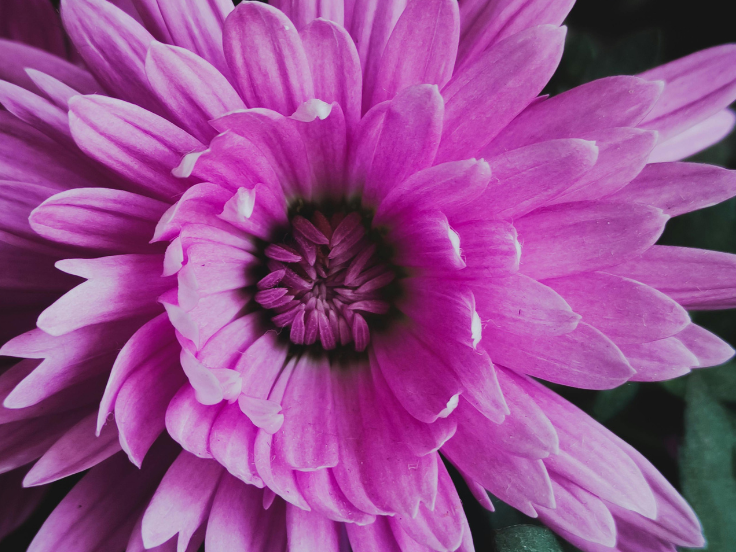Ever seen flowers in your food and wondered – can you truly eat them?
In India, many beautiful flowers are not just for decoration. They are edible, tasty, and full of health benefits.
Welcome to the bright and fragrant world of edible flowers in India. Here, traditional cooking and Ayurveda blend beautifully.
Edible flowers in India have been part of our cooking and healing traditions for centuries. They range from marigolds that brighten salads to roses that sweeten desserts.
These flowers do more than make your meals look beautiful. They add unique flavors and nice smells. They can also help improve your well-being naturally.
Imagine adding fresh hibiscus petals to your tea. You can use fragrant rose to flavor sweets.
Try adding moringa blossoms to your curries. Every dish transforms into a feast for both the eyes and the senses. Best of all, using edible flowers in your cooking connects you to ancient Ayurvedic wellness secrets. These secrets help nurture your body and soul.
Want to try edible flowers at home? You can now order fresh, pesticide-free edible blooms directly from GulMahal.in – delivered right to your doorstep, ready to add magic to your everyday meals.
In this guide, you’ll discover:
- Which edible flowers grow in India?
- Health benefits and essential tips for enjoying them safely.
Let’s explore the colorful and tasty world of edible flowers in India. You can add fresh garden beauty and health to your meals.
What Are Edible Flowers?
Edible flowers are beautiful blooms that you can safely enjoy as part of your meals. In India, these flowers have a rich heritage – not only do they add vibrant colors and exciting flavors to traditional dishes, but many also bring medicinal benefits rooted in Ayurveda.
Imagine the refreshing tang of hibiscus or the delicate sweetness of rose petals – each flower has its own story and charm that can elevate your cooking.
Popular Edible Flowers in India You Should Know About
India’s diverse climate supports a variety of edible flowers, many of which have been cherished for centuries. Here are some of the most delightful ones to include in your kitchen:
Banana Blossom
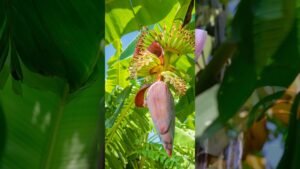 Banana blossom is a nutritional powerhouse packed with fiber, vitamins C and B6, potassium, and antioxidants. It supports good digestion by regulating bowel movements and promotes heart health by helping to lower cholesterol.
Banana blossom is a nutritional powerhouse packed with fiber, vitamins C and B6, potassium, and antioxidants. It supports good digestion by regulating bowel movements and promotes heart health by helping to lower cholesterol.
Traditionally, it’s been used in India to ease menstrual discomfort and boost lactation in new mothers. The flower also exhibits antimicrobial properties, helping strengthen immunity. In the kitchen, banana blossoms absorb spices well and can be enjoyed in stir-fries, fritters, and salads.
Pumpkin Flower
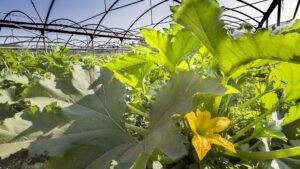 Pumpkin flowers are rich in vitamins A and C, calcium, and antioxidants. They help strengthen bones and improve eye health due to their vitamin A content. High in dietary fiber, these flowers aid digestion and promote satiety, helping with weight management.
Pumpkin flowers are rich in vitamins A and C, calcium, and antioxidants. They help strengthen bones and improve eye health due to their vitamin A content. High in dietary fiber, these flowers aid digestion and promote satiety, helping with weight management.
Pumpkin flowers are also low in calories and have anti-inflammatory compounds that can reduce swelling. They are delicious when stuffed, fried, or cooked in curries, adding both nutrition and delicate flavor.
Mustard Flower
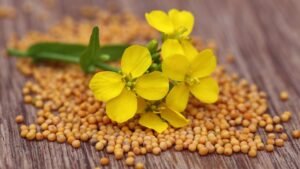
Mustard flowers contain antioxidants and antiseptic compounds known to support immune health and fight seasonal illnesses.
Traditionally eaten in regions like Bengal, they help in detoxifying the body and promoting healthy digestion. These zesty flowers provide vitamin C and cancer-fighting phytochemicals.
The bitter-sweet flavor makes them ideal for stir-fries, sabzis, or crispy fritters, offering a nutritious and tasty seasonal treat.
Moringa Flower
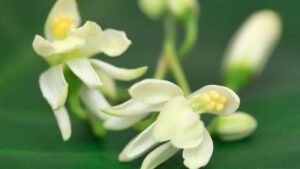
Moringa flowers are a rich source of vitamins A, B, and C, and minerals such as calcium and potassium. Known for their antiseptic, anti-inflammatory, and immunity-boosting properties, they help the body fight infections and reduce inflammation.
Moringa flowers support bone health and promote healthy skin. Their mild flavor works well when sautéed, fried, or added to curries, making them a nutritious addition to traditional Indian cuisine.
Jasmine
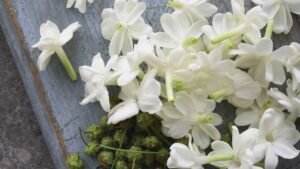
Jasmine flowers are widely recognized for their calming aroma, which helps reduce stress and anxiety. Rich in antioxidants, they contribute to improved immune function and skin health.
Traditionally, jasmine petals are used to flavor teas and desserts, adding a fragrant touch.
Additionally, their antioxidant properties work to counteract oxidative stress, protecting against aging and chronic diseases.
Hibiscus
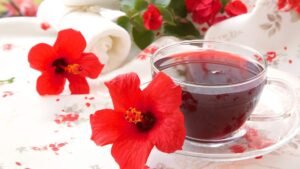
Hibiscus is packed with vitamin C, antioxidants, and iron, making it a fantastic flower for boosting immunity and supporting cardiovascular health. Its tart and tangy flavor is perfect in refreshing teas, sharbat, and jams.
Hibiscus also helps lower blood pressure and supports liver health. The vibrant red petals invite both health and beauty to any dish or drink.
Marigold (Genda Phool)
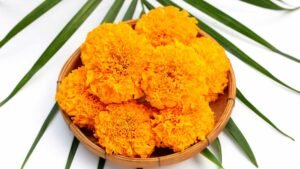
Marigold petals are rich in carotenoids and antioxidants that promote eye health and fight inflammation. These bright orange flowers also improve digestion and possess antibacterial properties.
Marigolds add a splash of color and subtle citrus-like flavor to foods, from salads to desserts. Their anti-inflammatory benefits make them a great addition to a health-conscious diet.
Order bright marigold petals from GulMahal.in
Rose
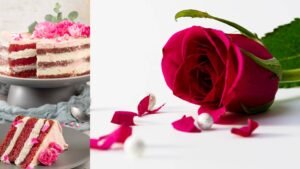
Rose petals contain polyphenols and vitamin C that aid in reducing stress and supporting heart health. Their fragrant aroma has calming effects, commonly used in herbal teas and desserts like gulkhand or rose sherbet.
Roses are known for their antioxidant and anti-inflammatory properties, assisting in skin care and immune support. Their sweet, floral flavor adds elegance to many traditional Indian dishes.
Buy premium roses from GulMahal.in
Saffron Crocus (Kesar)
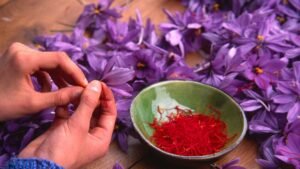
Saffron crocus, known as kesar, contains powerful antioxidants like crocin and safranal that enhance mood and promote skin health. It also exhibits anti-inflammatory effects and supports cognitive function.
Saffron threads impart a golden color and a rich aroma to biryanis, sweets, and milk, making it one of the most treasured spices in India’s culinary tradition.
Sewali (Parijat)
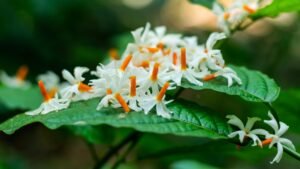
Sewali, or Parijat flower, is abundant in vitamins A, C, and E, providing a strong boost to the immune system. These flowers have anti-inflammatory properties and help combat colds and flu.
Common in Northeast Indian cuisine, sewali petals are used in light curries, sabzis, and salads, contributing a mild flavor and nutritional benefits.
Gladiolus, Pansy, Nasturtium
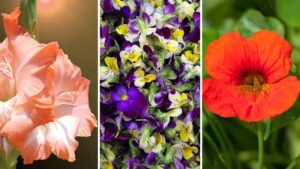
Gladiolus petals offer a gentle flavor along with vitamins A and C, supporting eye and skin health.
Pansies have a soft sweetness and are rich in antioxidants and compounds that aid digestion.
Nasturtium flowers bring a peppery taste and are loaded with vitamin C, boosting immunity and adding spice to salads or sandwiches.
These modern edible blooms make elegant garnishes and nutritious additions to meals.
Sunflower, Chamomile, Lavender
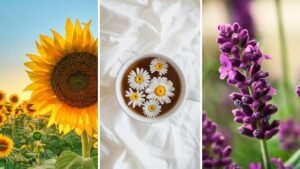
Sunflower petals are mild in flavor and add a subtle crunch to salads and snacks.
Chamomile is famed for its soothing effects on the nervous system, reducing inflammation and easing menstrual pain, often consumed as tea.
Lavender’s sweet aroma and anti-anxiety properties make it perfect for desserts and beverages, providing relaxation and gentle flavor.
Buy fresh sunflower from GulMahal.in
Spotlight on Hibiscus, Marigold, and Rose
Let’s take a closer look at a few star edible flowers:
Hibiscus is prized for its vibrant color and zesty taste. Rich in antioxidants and vitamin C, it’s commonly steeped into hibiscus tea or incorporated into jams, making for a refreshing and healthful treat.
Marigold petals aren’t just for decoration. With carotenoids that support vision and antioxidants that soothe digestion, they add a mild citrusy note to soups, salads, and desserts.
Rose petals bring elegance and a floral aroma to food. Rich in polyphenols and vitamin C, roses are staples in traditional desserts like gulkhand and rose sherbet, offering both flavor and heart-friendly benefits.
How to Use Edible Flowers Safely and Sustainably
To enjoy edible flowers safely:
- Buy from trusted sources offering organic, pesticide-free flowers.
- Always rinse blooms gently before cooking or eating.
- Start with small amounts to ensure you don’t have allergic reactions.
- Use petals unless otherwise specified – some flowers have parts that may not be edible.
Ready-to-try ideas: sprinkle fresh petals over salads or desserts for flair, infuse teas and syrups with floral notes, or fry flowers for crunchy fritters.
Why Edible Flowers Are Becoming a Trend in India
The re-emergence of edible flowers in Indian kitchens is driven by a few exciting factors:
- A burst of flavors adding diversity from the tang of hibiscus to the warmth of nasturtium
- Natural boosts of fiber, vitamins, and antioxidants for well-being
- Stunning visual appeal perfect for festive dishes and social media-worthy meals
- A revival of traditional, plant-based remedies blended with modern health-conscious trends
Unleash your creativity with edible flowers and watch your meals flourish—bringing nature’s beauty and wholesome nutrition right to your plate.
Taste the Tradition of India’s Edible Flowers:
From traditional recipes to modern creations, edible flowers bring authentic Indian flavor and nutrition to your table. Shop our premium selection and get inspired to cook with blooms!
Written By: Shahela Begum
Several flowers are safe and delicious to eat, including Gladiolus, Pansies, Nasturtium, Sunflowers, Chamomile, and Lavender. Gladiolus petals are mild and decorative, pansies have a sweet grassy taste, and nasturtiums add a peppery, watercress-like flavor. Sunflower petals, seeds, and buds are edible, while chamomile is best known for its calming tea with a light apple flavor. Lavender brings a floral sweetness to teas, desserts, and herb blends. These edible flowers are not only beautiful but also add unique flavor, color, and nutrition to culinary dishes.
Edible flowers should be stored carefully to maintain freshness. First, gently rinse them in cool water and pat dry. Wrap the flowers in a slightly damp paper towel and place them in an airtight container. Store the container in the refrigerator, ideally in the crisper drawer, where they will stay fresh for 2–5 days. Avoid sealing them completely without airflow, as excess moisture can cause wilting. For longer storage, some edible flowers can be frozen in ice cubes or dried for teas and garnishes.
To grow edible flowers at home, choose safe varieties like pansies, nasturtium, calendula, chamomile, and lavender. Use organic, pesticide-free soil and containers or garden beds with good drainage. Plant seeds or seedlings in a sunny spot, water regularly, and remove weeds to avoid competition. Always avoid chemical fertilizers and sprays since the flowers are meant for eating. Harvest blossoms in the morning after dew dries, when petals are freshest. With proper care, many edible flowers will thrive in pots, balconies, or home gardens and provide beauty along with flavor for your kitchen.
Edible flowers can be used in many creative ways to add flavor, color, and nutrition to dishes. Sprinkle fresh pansies or nasturtiums over salads for a pop of color, or freeze petals in ice cubes for decorative drinks. Chamomile and lavender are perfect for brewing soothing teas, while calendula and hibiscus add vibrant flavor to soups or sauces. You can also use rose, marigold, or violet petals to decorate cakes, cookies, and desserts. For savory dishes, edible flowers can be stuffed, candied, dried for seasoning, or infused in oils, syrups, and honey. Always ensure flowers are organic and pesticide-free before eating.
You can buy edible flowers at Gulmahal. Many people source fresh edible flowers like marigolds from Gulmahal. It’s a trusted local spot for specialty flowers used in cooking, garnishing, and decoration.



